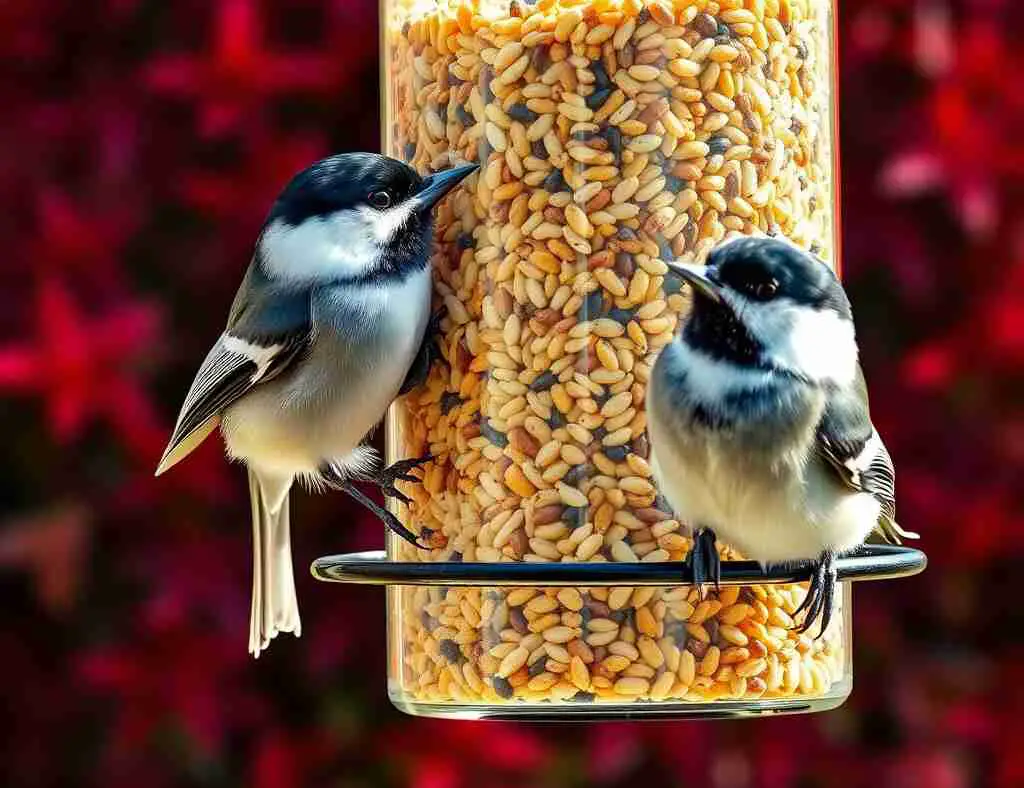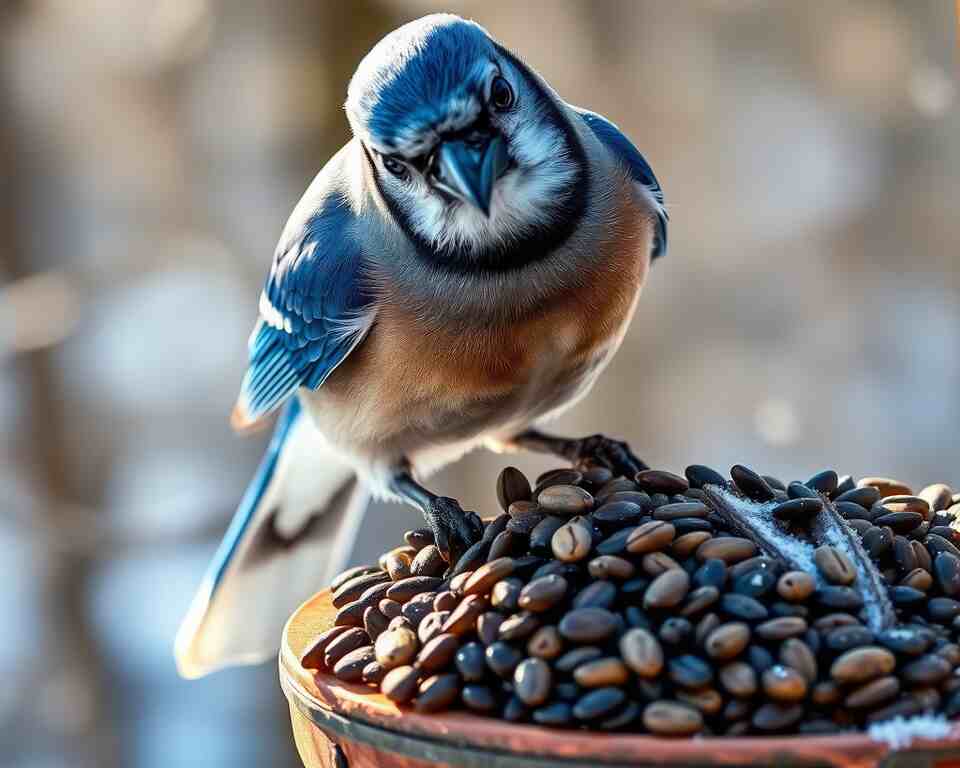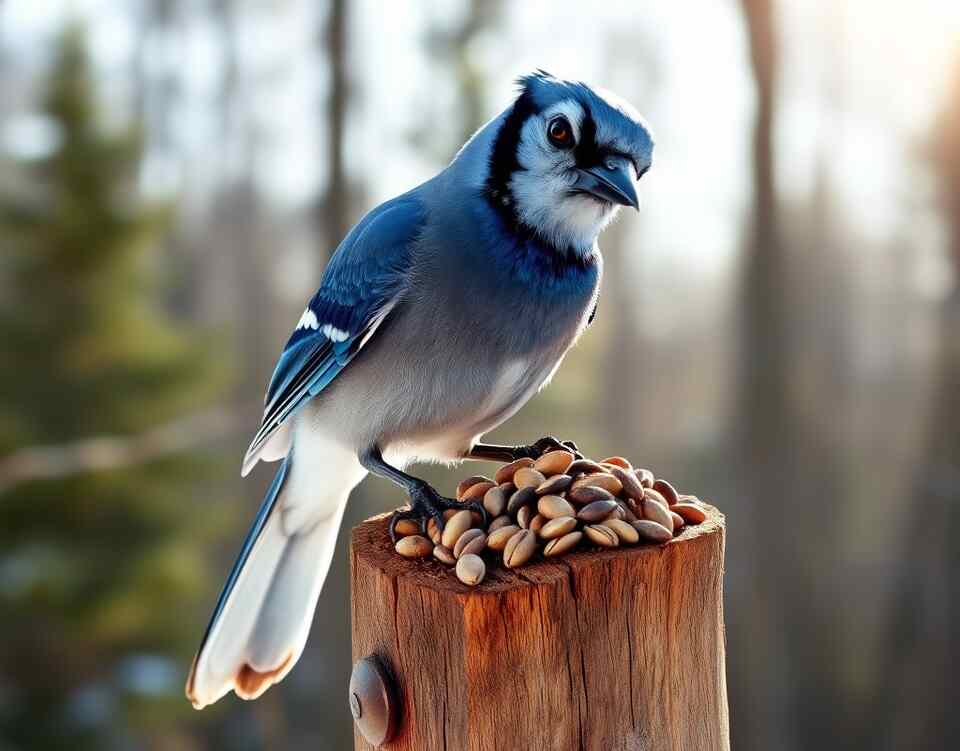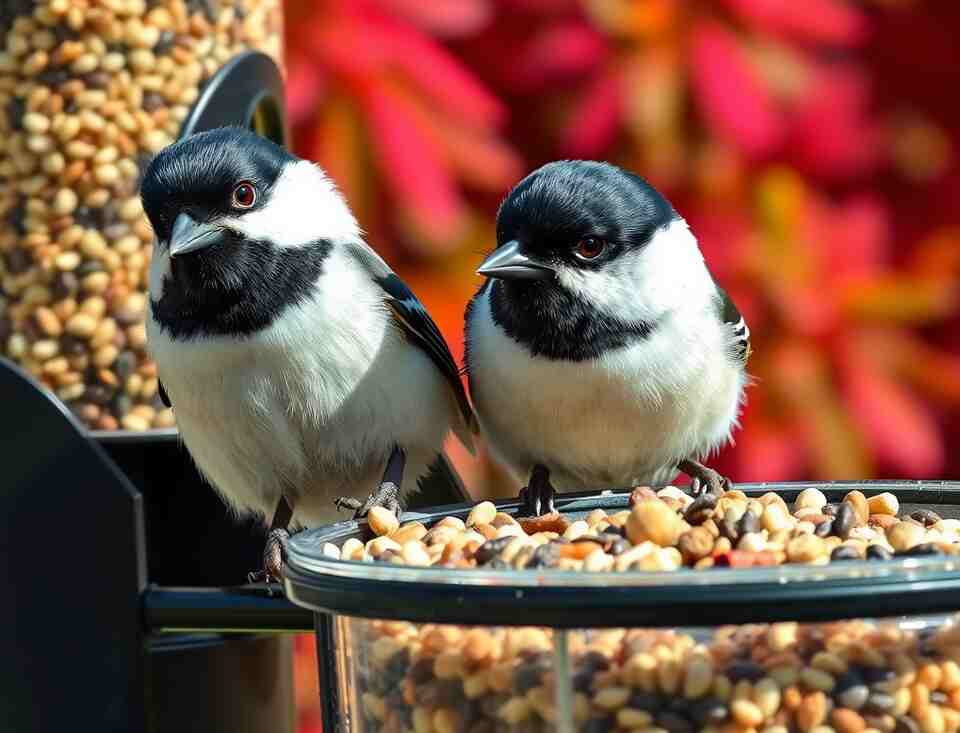Ever wondered what bird seed to avoid? The worst bird seed mixes for attracting specific species are often loaded with fillers like milo, wheat, or red millet, seeds many birds simply won’t eat. Using the wrong mix can leave your feeders untouched and frustrate your efforts to attract favorites like finches, cardinals, or chickadees. In this article, you’ll learn which ingredients to watch out for, why they don’t work, and how to choose the right seed for the birds you actually want to see.
Table of Contents
- 1 Why Bird Seed Mix Quality Matters
- 2 The Worst Seed Mixes for Common Backyard Birds
- 3 Understanding Filler Seeds: The Bane of Quality Bird Seed Mixes
- 4 The Worst Seed Mixes: A Comparative Table
- 5 The Impact of Poor Seed Choices on Bird Health
- 6 The Environmental Impact of Poor Seed Choices
- 7 How to Choose the Right Seed Mix: A Bird-Friendly Approach
- 8 Conclusion: Feeding for a Healthier Avian Future
- 9 Author
Why Bird Seed Mix Quality Matters
Before we dive into the specifics of what not to feed different bird species, it’s crucial to understand why the quality of your bird seed mix is so important. The right mix can:
- Attract a diverse array of bird species
- Provide essential nutrients for birds’ health and energy
- Reduce waste and mess in your feeding area
- Save you money in the long run by preventing uneaten seed
Conversely, the wrong mix can:
- Attract unwanted pests like rodents
- Cause nutritional deficiencies in birds
- Create a mess in your yard
- Waste your money on uneaten or low-quality seed
With these factors in mind, let’s explore the worst seed mixes for some popular backyard bird species.
The Worst Seed Mixes for Common Backyard Birds
Cardinals: Avoiding the Red Bird Blues
Cardinals are among the most sought-after backyard visitors, known for their vibrant red plumage and cheerful songs. However, many bird enthusiasts make the mistake of choosing the wrong seed mix for these beautiful creatures.
What to Avoid:
- Mixes with a high percentage of milo: Milo, also known as sorghum, is often used as a filler in cheap bird seed mixes. Cardinals generally avoid this seed, leaving it to waste in your feeder.
- Fine seeds only: While cardinals do enjoy some smaller seeds, a mix consisting solely of tiny seeds like millet won’t provide the variety they need.
- Mixes with artificial coloring: Some manufacturers add red dye to their “cardinal mixes,” but this is unnecessary and potentially harmful to birds.
Better Alternatives:
Cardinals prefer larger seeds like sunflower seeds, safflower seeds, and peanuts. A high-quality mix containing these ingredients will be much more attractive to cardinals and other desirable species.
Goldfinches: When Yellow Turns to Frown
Goldfinches are delightful little birds that can add a splash of color to any backyard. However, many commercially available “finch mixes” are far from ideal for these discerning eaters.
What to Avoid:
- Generic wild bird seed mixes: These often contain large seeds that goldfinches can’t easily handle.
- Mixes with a high percentage of milo or cracked corn: Goldfinches typically ignore these ingredients.
- Stale or rancid seed: Goldfinches are particularly sensitive to seed freshness.
Better Alternatives:
Goldfinches have a strong preference for Nyjer (thistle) seed and small sunflower chips. A mix specifically designed for finches that focuses on these ingredients will be far more successful in attracting these charming birds.
Woodpeckers: Drumming Up Disappointment
Woodpeckers are fascinating birds that can add a unique dynamic to your backyard bird-watching experience. However, many people make the mistake of offering them inappropriate seed mixes.
What to Avoid:
- Mixes heavy in small seeds: Most woodpeckers aren’t interested in tiny seeds like millet or canary seed.
- Low-fat seed mixes: Woodpeckers require a diet high in fat and protein.
- Mixes without nuts: Many woodpeckers are particularly fond of nuts, which are often missing from generic seed mixes.
Better Alternatives:
Woodpeckers prefer larger, high-fat items like sunflower seeds, peanuts, and suet. A mix that incorporates these elements will be much more appealing to woodpeckers and other bark-foraging birds.
Understanding Filler Seeds: The Bane of Quality Bird Seed Mixes
One of the biggest issues with many commercial bird seed mixes is the inclusion of “filler” seeds. These are typically inexpensive seeds that many birds find unpalatable, leading to waste and potentially attracting unwanted pests. Let’s take a closer look at some common filler seeds and why they should be avoided.
Milo (Sorghum): The Red Seed of Disappointment
Milo, also known as sorghum, is one of the most common filler seeds found in cheap bird seed mixes. It’s often recognizable as the round, reddish seeds in a mix.
Why it’s problematic:
- Most songbirds dislike milo and will toss it aside to get to more desirable seeds.
- Discarded milo can sprout, creating a mess in your yard.
- It can attract less desirable ground-feeding birds and rodents.
While some ground-feeding birds like doves and quail may eat milo, it’s generally best to avoid mixes that contain a high percentage of this seed.
Wheat and Oats: Cereal Grains Gone Wrong
Wheat and oats are sometimes included in bird seed mixes, but they’re far from ideal for most backyard birds.
Why they’re problematic:
- Many songbirds lack the strong bills needed to crack these grains.
- They can quickly become moldy when exposed to moisture.
- Like milo, they often end up on the ground, attracting unwanted visitors.
Cracked Corn: Not as Corny as You Might Think
While some birds do eat cracked corn, it’s often overused in cheap seed mixes.
Why it’s problematic:
- It’s less nutritious than many other seed options.
- It can spoil quickly in wet conditions.
- It’s attractive to less desirable birds like starlings and grackles.
While a small amount of cracked corn can be acceptable, mixes with a high percentage should be avoided.
The Worst Seed Mixes: A Comparative Table
To help you make informed decisions about your bird seed purchases, here’s a table comparing some of the worst seed mixes for attracting specific species:
| Bird Species | Worst Seed Mix | Why It’s Bad | Better Alternative |
|---|---|---|---|
| Cardinals | “Economy” wild bird mix with high milo content | Cardinals avoid milo, leading to waste | Black oil sunflower seeds, safflower seeds, peanuts |
| Goldfinches | Generic wild bird seed with large seeds | Goldfinches prefer tiny seeds | Nyjer (thistle) seed, small sunflower chips |
| Woodpeckers | Small seed mix (millet, canary seed) | Woodpeckers need larger, high-fat foods | Sunflower seeds, peanuts, suet cakes |
| Chickadees | All-millet mix | Lacks variety and nutrition | Black oil sunflower seeds, peanuts, suet |
| Hummingbirds | Any seed mix | Hummingbirds don’t eat seeds | Nectar solution (sugar water) |
| Blue Jays | Fine seed mix | Blue jays prefer larger seeds and nuts | Peanuts, sunflower seeds, corn |
| Nuthatches | Low-fat seed mix | Nuthatches require high-fat diets | Sunflower seeds, peanuts, suet |
| Titmice | Milo-heavy mix | Titmice avoid milo | Black oil sunflower seeds, peanuts |
| Finches | Large seed mix | Most finches prefer smaller seeds | Nyjer seed, small sunflower chips |
| Doves | High-perch feeder with small seeds | Doves are ground feeders | Ground feeding with cracked corn, millet |
The Impact of Poor Seed Choices on Bird Health
Choosing the wrong seed mix doesn’t just result in wasted money and a messy yard. It can also have significant impacts on the health and well-being of the birds you’re trying to attract. Let’s explore some of the potential consequences of offering inappropriate seed mixes.
Nutritional Deficiencies
Birds require a balanced diet to maintain their health, especially during breeding seasons and migration periods. Poor-quality seed mixes that are heavy in fillers can lead to nutritional deficiencies. For example:
- Lack of protein: Essential for feather growth and muscle development.
- Insufficient fat content: Critical for energy, especially in colder months.
- Missing vitamins and minerals: Necessary for overall health and egg production.
Increased Susceptibility to Disease
When birds congregate at feeders with low-quality seed, several factors can contribute to the spread of diseases:
- Moldy seed: Cheap mixes often contain seeds that spoil quickly, potentially causing respiratory issues in birds.
- Overcrowding: Less desirable seed encourages birds to crowd around limited good food, increasing the risk of disease transmission.
- Weakened immune systems: Poor nutrition can compromise birds’ ability to fight off infections.
Behavioral Changes
Offering inappropriate seed mixes can also lead to changes in bird behavior:
- Increased aggression: Competition for limited desirable seeds can lead to more aggressive behavior among birds.
- Altered migration patterns: Reliable sources of high-quality food can sometimes cause birds to alter their natural migration patterns, which can be problematic if the food source is suddenly removed.
- Dependence on feeders: While not inherently bad, over-reliance on feeders can be an issue if the birds are not receiving a balanced diet.
The Environmental Impact of Poor Seed Choices
The consequences of choosing the wrong bird seed mix extend beyond your backyard and the birds themselves. There are broader environmental considerations to keep in mind:
Invasive Plant Species
Many cheap bird seed mixes contain seeds of plants that can become invasive if they sprout in your yard or nearby natural areas. Some examples include:
- Millet: While not all millet species are invasive, some can spread rapidly in certain environments.
- Lamb’s quarters: Often found as a contaminant in bird seed, this plant can become weedy in gardens and agricultural areas.
- Johnson grass: Sometimes present in milo, this grass is considered a noxious weed in many regions.
To mitigate this risk, consider using seed mixes that have been treated to prevent germination, or regularly clean up spilled seed around your feeding area.
Impact on Local Ecosystems
Inappropriate feeding practices can disrupt local ecosystems in several ways:
- Attracting non-native species: Some seed mixes may attract invasive bird species that compete with native birds for resources.
- Altering predator-prey dynamics: Concentrating birds in one area can make them more vulnerable to predators, potentially impacting local population balances.
- Changing plant dispersal patterns: Birds play a crucial role in seed dispersal. Altering their diets and movements can affect plant distribution in your local ecosystem.
Waste and Pollution
Poor-quality seed mixes often lead to more waste:
- Uneaten seed: Seeds that birds don’t eat can rot, creating unpleasant odors and potentially harmful conditions.
- Plastic packaging: Cheaper mixes often come in non-recyclable plastic bags, contributing to plastic pollution.
- Increased rodent populations: Excess seed on the ground can lead to increases in rodent populations, which can have cascading effects on the local ecosystem.
How to Choose the Right Seed Mix: A Bird-Friendly Approach
Now that we’ve explored the pitfalls of poor seed choices, let’s focus on how to select the right mix for your backyard birds. Here are some tips to help you make bird-friendly choices:
1. Know Your Local Birds
Research the species common to your area and their dietary preferences. This knowledge will help you choose mixes that cater to your local avian population.
2. Read the Ingredient List
Always check the ingredient list on bird seed packages. Avoid mixes with high percentages of filler seeds like milo, wheat, or oats unless you’re specifically trying to attract birds that eat these seeds.
3. Consider Single-Seed Options
Sometimes, offering single types of seeds in separate feeders can be more effective than mixed seeds. This approach allows birds to choose their preferred foods and reduces waste.
4. Prioritize Quality Over Quantity
Investing in higher-quality seed mixes may seem more expensive initially, but it often works out more economical in the long run due to less waste and increased bird activity.
5. Rotate Your Offerings
Different birds may visit your yard in different seasons. Consider changing your seed mix seasonally to cater to the current visitors and provide variety.
6. Supplement with Other Foods
Remember that seeds aren’t the only food birds enjoy. Consider offering:
- Suet cakes for woodpeckers, nuthatches, and chickadees
- Fresh fruit for orioles and tanagers
- Mealworms for bluebirds and wrens
- Nectar for hummingbirds
7. Keep It Fresh
Store your bird seed in a cool, dry place and use it within a reasonable time frame. Stale or moldy seed can be harmful to birds.
Conclusion: Feeding for a Healthier Avian Future
Choosing the right bird seed mix is about more than just attracting colorful visitors to your yard. It’s about promoting the health and well-being of wild bird populations, supporting local ecosystems, and fostering a deeper connection with the natural world.
By avoiding the worst seed mixes – those filled with undesirable fillers, lacking in nutritional value, or inappropriate for your local species – you’re taking an important step in bird conservation. You’re not just feeding birds; you’re providing them with the energy they need to survive, breed, and maintain healthy populations.
Remember, every time you fill your feeder, you’re making a choice that impacts the birds in your backyard and beyond. By making informed decisions about the seed you offer, you’re contributing to a healthier, more vibrant avian community.
So the next time you’re at the store, bypass those bargain mixes filled with milo and other fillers. Instead, invest in quality seeds that will truly benefit the birds you love to watch. Your feathered friends – and the environment – will thank you for it.
Happy bird feeding!
Images created using PicLumen. Visit www.piclumen.com for more.





